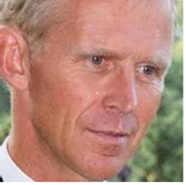ICOA Seminar by Tore Christiansen
Towards predictive tools for designing organizations

Tuesday 11 September at 10:15 in room 2610-S530 (S building) Tore Christiansen, Senior Consultant, Acando, Oslo, will give a presentation entitled:
Towards predictive tools for designing organizations
In mechanics, experiments are carried out to predict the behavior of real structures under expected (or actual) physical load. In organization science, experiments are carried out to explain the behavior of real organizations under (actual or) past workload. The models used in mechanics are (for the most part) simple and straight forward, and this raises the question of whether we can formulate simple organizational models that can accurately predict behavior and performance. With such tools we would be able to quickly design an organization to handle a defined objective and set of tasks.
Starting from the contingency theory of organizations, we explain how the simulation model for the Virtual Design Team (VDT) experiments simulates project execution to find a best way to organize in a given task environment. The VDT models have been validated against real organizations with considerable accuracy, but depend on relatively complex modeling and result evaluation to give trustworthy results.
We explore how the results from simulation of project organizations can be synthesized and formalized into an Organizational Reynolds number (ORe), as a ratio between the de-stabilizing and stabilizing factors affecting the project team. In analogy with the well-known Reynolds number (Re) in fluid dynamics, we find a that there is a critical value of ORe where orderly project execution breaks down and large delays, cost-overrun and quality defects occur.
We then formulate organization design in terms of structuring organizational communication dependencies to achieve maximum fitness, and apply a genetic algorithm to derive the optimal structure for handling a given task environment (set of communications). This gives us a measure of organizational fitness (OFi) for a given load, which can be used to compare different structuring of the same organizational resources.
Further work is required to investigate how breakdown of orderly execution (critical ORe) from simulation correlates with organizational fitness (optimal OFi) from structural optimization. Understanding the effect of organizational structure on the effectiveness of organizational action, we should be able to make predictions about the ability of a structure with a given fitness to handle a task environment with a given load, based on inspection of organizational structure and load – without having to carry out complex simulations. We believe this would be an important step towards creating simple tools for designing organizations.
BIO
Tore Reidar Christiansen has thirty years working experience as researcher, developer, consultant and manager in the engineering, information and organization sciences. He has served as designer and project manager of analysis programs, software applications and information systems for a leading international ship classification society, as adjunct professor in Civil Engineering at the Norwegian Institute for Science and Technology, as Chief Information Officer for a leading US on-line travel agency, and as Chief Principal Consultant on information and management to clients in the maritime and offshore industry, aerospace industry and public sector.
Tore holds a Bachelor of Aeronautical from Imperial College, London, a Master of Aeronautics and Astronautics from MIT, and a PhD in Construction Management from Stanford University. In addition, he has studied Business Management at IMD, Lausanne.
He currently works as Senior Consultant in Enterprise Architecture in Oslo, helping clients design and develop enterprise architectures and management systems for business and public sector organizations.